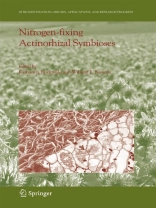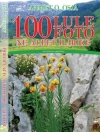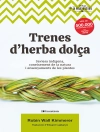Nitrogen-fixing Actinorhizal Symbioses This book is part of a seven-volume series that was launched in 2004 and covers all aspects of nitrogen fixation from the biological systems to the industrial processes. Volume 6 covers nitrogen-fixing actinorhizal symbioses, which occur between soil actinomycetes of the genus Frankia and a diverse group of dicotyledonous plants, collectively called actinorhizal plants. These symbioses play vital roles in native ecosystems as well as important components in both forestry and land reclamation. The volume is divided into 11 chapters, all authored by well-known scientists in the field. As in previous volumes of this series, the first chapter presents an historical perspective and describes the development of actinorhizal research with its focus on the period after the first reproducible isolation of the responsible microorganism by John Torrey’s group in 1978. Very early on, the initial attempts to characterize the bacterium taxonomically had considered this endosymbiont as an obligate symbiotic bacterium and used its ability to form root nodules and its morphological characteristics within root-nodule cells as discriminative criteria to distinguish it from other actinomycetes. These efforts led to the emendation of the family Frankiaceae with the type genus Frankia and also to the definition of host-specificity groups based on inoculation experiments using crushed nodules. However, after Frankia strains were isolated from nodules and pure cultures became available, many of these early results had to be discarded. Chapter 2 describes the techniques used to obtain phenotypic, genotypic and phylogenetic information on the members of the genus Frankia.
Inhoudsopgave
Preface to the Series, Preface, List of Contributors, Dedication.
1. Frankia and Actinorhizal Plants: A Historical Perspective: C. T. Wheeler, A. D. L. Akkermans, and A. M. Berry
1. Introduction
2. The Early Years
3. Two Decades to the New Millennium
4. Perspectives
References
2. Polyphasic Taxonomy of the Genus Frankia: D. Hahn
1. Introduction
2. Polyphasic Taxonomy Approach
3. 16S-r RNA Sequence Data
4. DNA-DNA Relatedness
5. 23S-r RNA Sequence Data
6. Genomic Fingerprinting
7. Conclusions
References
3. Frankia Ecology: M. Valdés
1. Introduction
2. Frankia as a Soil Microorganism
3. Abiotic Soil Factors and Frankia Populations
4. Biotic Soil Factors: Mycorrhizal Fungi and Frankia
5. Conclusions References
4. Evolution of Actinorhizal Host Plants and Frankia Endosymbionts: S. M. Swensen and D. R. Benson
1. Introduction
2. Host-Plant Systematics and Phylogeny
3. Frankia Phylogeny and Evolution
4. Host-Frankia Interactions and Evolution
5. Future Directions
References
5. Oxygen Responses, Hemoglobin, and the Structure and Function of Vesicles: W. B. Silvester, R. H. Berg, C.R. Schwintzer and J. D. Tjepkema
1. Introduction
2. Vesicle Structure and Oxygen Responses of Frankia in vitro
3. Responses in Symbiosis
4. Hemoglobins in Actinorhizal Nodules and Frankia
5. Concluding Discussion
References
6. Early Interactions, Infection and Nodulation in Actinorhizal Symbiosis: L. G. Wall and A. M. Berry
1. Introduction
2. Early Interactions
3. Rhizosphere Colonization
4. Root Infection by Frankia
5. Nodule Development
6. Regulation of Nodulation
References
7. Carbon and Nitrogen Metabolism in Actinorhizal Nodules: C. Valverde and K. Huss-Danell
1. Introduction
2. The Actinorhizal Nodule
3. Studying C and N Metabolism of Nodules
4. Carbon Supply to Nodules
5. Carbon Uptake and Metabolism by Symbiotic Frankia
6. Nitrogen Metabolism
7. The Regulation of N Assimilation
8. Prospects References
8. Ecology of Actinorhizal Plants: J. O. Dawson
1. Importance of Actinorhizal Plants
2. Occurrence and Distribution of Actinorhizal Plant Taxa and their microsymbionts
3. Ecological Factors Influencing Infective Frankia Populations
4. Ecological of Actinorhizal Plants
References
9. Molecular Biology of Actinorhizal Symbioses: L. Laplaze, S. Svistoonoff, C. Santi, F, Auguy, C. Franche and D. Bogusz
1. Introduction
2. Infection Process
3. Nodule Development
4. Nodule Functioning
5. Evolutionary Origin of Symbiotic Genes
6. Future Trends
7. Conclusions
References
10. Comparison between Actinorhizal and Legume Symbiosis: K. Pawlowski and J. I. Sprent
1. Introduction
2. Nodule Structure
3. Nodule-Induction Mechanisms
4. Host Specificity
5. Root Nodules and Other Root Symbioses
6. Evolution of Root-Nodule Symbioses
References
11. Prospects for the Study of a Ubiquitous Actinomycete, Frankia, and Its Host Plants: P. Normand and B. C. Mullin
1. Introduction
2. Development and Use of Molecular Tools for Genetic Analysis of Symbiosis
3. Prospects for Future Utilization of Actinorhizal Plants
4. Questions Still to be Addressed
5. Prospects for Extending Symbioses beyond Current Host Range
6. Conclusions
References
Subject Index












